IMAGE GALLERY
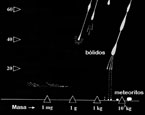 Schematic diagram exemplifying the meteoric phenomenon
Schematic diagram exemplifying the meteoric phenomenon
This diagram covers from small cometary/asteroidal particles that produce shooting stars to big fireballs. Big fireballs are typically originated by asteroids, comets or other planetary bodies when entering the terrestrial atmosphere reach velocities around several hundred kilometers/hour. Only the biggest rocks will reach the ground, being called meteorites. The space particles from several microns to 10 meters are called meteoroids.
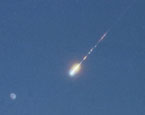 On the left side appears the orbit of Villalbeto de la PeûÝa meteorite in the solar system
On the left side appears the orbit of Villalbeto de la PeûÝa meteorite in the solar system
One video and several photographs captured by chance allowed for the first time in Spain the reconstruction of an orbit meteorite. Right side: Bolide photograph taken by MarÚa M. Ruiz from Santa Columba de CorueûÝo (Leon, Spain).
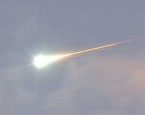 Villalbeto de la PeûÝa bolide in flight
Villalbeto de la PeûÝa bolide in flight
Villalbeto de la PeûÝa bolide as photographed from las Hoces de Valdeteja (Leon, Spain). Image courtesy of Salvador Diez.
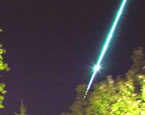 Bejar bolide low resolution image (SPMN110708)
Bejar bolide low resolution image (SPMN110708)
The rock that produced this fireball would be associated with a comet from Jupiter family named C/1919Q2 Metcalf. Higher resolution images are available at the Javier Pûˋrez Vallejo web page (FOTOART). Javier Pûˋrez Vallejo homepage (FOTO-ART).
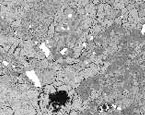 Villalbeto de la PeûÝa thin section image under a scanning electron microscope (SEM)
Villalbeto de la PeûÝa thin section image under a scanning electron microscope (SEM)
Several rounded chondrules are easily visible in this SEM image of the L6 ordinary chondrite Villalbeto de la PeûÝa. J.M. Trigo (CSIC-IEEC).
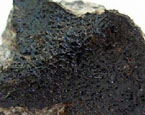 Puerto LûÀpice meteorite linked with asteroid Vesta
Puerto LûÀpice meteorite linked with asteroid Vesta
Puerto LûÀpice meteorite sample probably coming from Vesta asteroid. Each side of paper square matches 1mm. It can be seen clearly the meteorite fusion crust, as well as the brecciated interior appearance. J. Llorca (UPC).
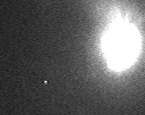 January 26 2010 fireball (SPMN260110 'Torredembarra', 00h08m48.5ôÝ0.1s T.U.C.)
January 26 2010 fireball (SPMN260110 'Torredembarra', 00h08m48.5ôÝ0.1s T.U.C.)
A bright bolide recorded from the Montseny and Folgueroles SPMN video stations (J.M.Trigo/CSIC-IEEC and P.Pujols/AAO). The absolute magnitude was -11ôÝ1, and associated with the Alpha Geminids North Terentjeva source (#T8N). This bolide overflow Aragû°n, CataluûÝa and the Valencia Community. For more details visit the SPMN fireball list.
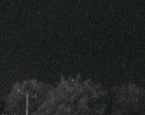 28 September 2009 fireball (SPMN280909, 01h04m48ôÝ1s T.U.C.)
28 September 2009 fireball (SPMN280909, 01h04m48ôÝ1s T.U.C.)
A nice fireball exhibiting a final ending flare as recorded from the Universidade de Santiago de Compostela SPMN stations in Santiago and Lugo (Prof. Josûˋ A. Docobo y Pedro P. Campo, OARMA-USC). This event had an absolute magnitude -9ôÝ1; having origin in the Delta Aurigids stream. For more details visit the SPMN fireball list
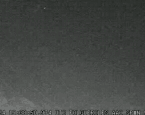 24 September 2009 fireball (SPMN240909, 19h38m50.8ôÝ0.1s T.U.C.)
24 September 2009 fireball (SPMN240909, 19h38m50.8ôÝ0.1s T.U.C.)
A bright bolide recorded from Montseny (Dr. J.M. Trigo/CSIC-IEEC), Folgueroles (P. Pujols/AAO) and Sant VicenûÏ de Castellet (Oscar van der Velde/UPC). Brighter as the Full Moon (absolute magnitude: -12ôÝ1). For more details visit the SPMN fireball list
 21 July 2009 fireball (SPMN210709 'Prats de LluûÏanûˋs', (03h50m45.2ôÝ0.1s T.U.C.)
21 July 2009 fireball (SPMN210709 'Prats de LluûÏanûˋs', (03h50m45.2ôÝ0.1s T.U.C.)
A bright bolide recorded from the Montseny and Folgueroles SPMN video stations (J.M.Trigo/CSIC-IEEC and P.Pujols/AAO). The absolute magnitude was -13ôÝ2, and associated with the Sigma Capricornids. This bolide overflow Aragû°n, CataluûÝa and the Valencia Community. For more details visit the SPMN fireball list





